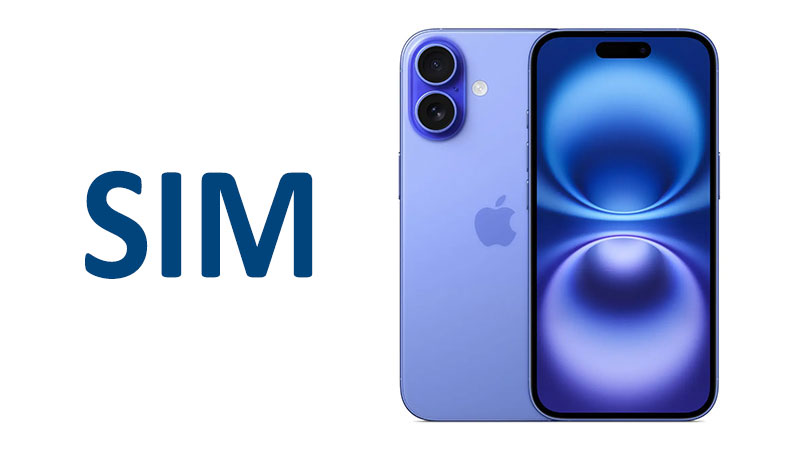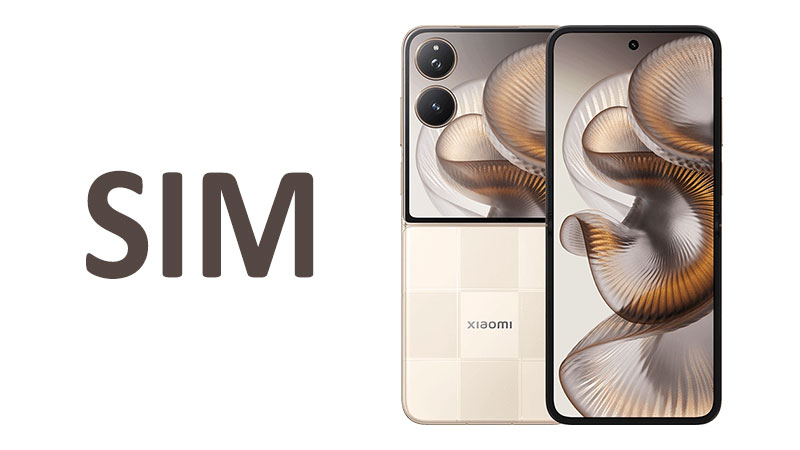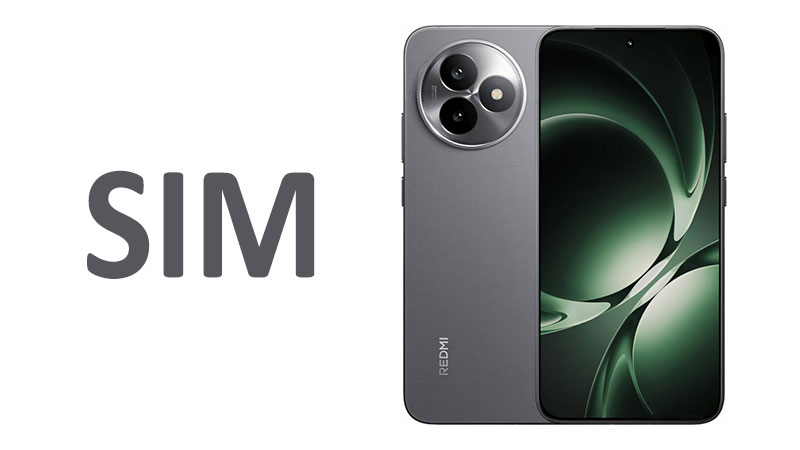The Apple iPhone 16 SIM setup represents a pivotal moment in the shift toward digital mobile architecture. This flagship device expertly manages its complex Dual-SIM system. It combines flexible electronic SIM technology with targeted physical slots for international markets. Understanding these connectivity options is essential for future iPhone owners. This comprehensive guide dissects the phone’s complete network and physical specifications. It explores the revolutionary Wi-Fi 7 integration and the high-speed 5G performance. This information empowers buyers to fully utilize the iPhone 16’s advanced capabilities. The device is built for a world prioritizing seamless, wireless performance.
The Evolving SIM Landscape of the iPhone 16
The iPhone 16 SIM configuration is highly dependent on its intended geographical market. Apple employs a strategy of regional adaptation for its connectivity hardware. This approach ensures maximum compliance with global carrier regulations. It also satisfies diverse consumer preferences for physical or digital SIM management. The overall goal is to provide reliable Dual-SIM functionality for all users.
The eSIM Only Mandate in the USA Model
The USA version of the iPhone 16 commits fully to the electronic SIM or eSIM technology. This model entirely removes the physical Nano-SIM card tray. The design relies exclusively on digital provisioning for line activation. This makes the phone one of the industry leaders in the eSIM-only transition.
The device supports a maximum of two active phone numbers at any given time. However, the iPhone 16 can store a considerable number of inactive eSIM profiles. It is specified to hold eight or more digital profiles. This is a significant convenience for frequent international travelers. They can easily download and store temporary travel plans. This elimination of the physical tray also has engineering benefits. It potentially enhances water resistance and frees up precious internal space. This space can then be allocated to other components, like a larger battery.
International Hybrid Flexibility
The International variant of the iPhone 16 offers a transitional hybrid setup. This version includes one physical Nano-SIM slot. It pairs this physical slot with support for multiple digital eSIM profiles. Users can activate a maximum of two lines simultaneously.
This configuration is popular in markets still adopting eSIM technology. It provides excellent flexibility. Users can keep their stable, long-term line on the physical Nano-SIM. They can then utilize the eSIM capability for a secondary personal line or international travel. This blended approach ensures maximum compatibility across different global carriers. It addresses the needs of markets with mixed digital and physical SIM infrastructures.
The Physical Dual-SIM Necessity in the China Model
The iPhone 16 sold in the Chinese market follows a distinct hardware mandate. This version features a dedicated physical Nano-SIM + Nano-SIM configuration. It omits the eSIM functionality found in other regions. This design directly addresses the strong local consumer preference. Users in China often demand two tangible SIM cards for managing dual business and personal lines.
This commitment to physical dual-SIM hardware ensures seamless service. It simplifies activation and swapping. This regional design maintains a strong tradition of hardware-centric solutions in the Asia-Pacific region. Consequently, buyers must verify their model number before purchasing abroad.
Specialized Comparison: Expanded eSIM Capacity
Apple’s ability to store eight or more eSIM profiles is a major competitive advantage. Older smartphones, even those from the previous iPhone generation, often limited storage to just five or six profiles. This expanded digital capacity improves user experience significantly. It allows users to manage multiple international data plans easily. They can switch between stored profiles instantly when crossing borders. This eliminates the need to contact carriers repeatedly for re-provisioning. The iPhone 16 offers best-in-class digital SIM management.
Pros and Cons of the iPhone 16 SIM System
The main benefit is the sheer flexibility provided by the eSIM technology. It allows for quick, digital line switching and simplifies global travel. The dual active line support caters well to professional users. The regional adaptations ensure the device works everywhere it is sold.
The USA model presents a possible drawback. Its eSIM-only design can be problematic for small regional carriers. These smaller providers may not fully support eSIM provisioning yet. Furthermore, relying purely on digital activation can occasionally be complicated during the initial setup process. A steady internet connection is necessary for smooth activation.
Important Points for iPhone 16 Buyers
It is vital to confirm the specific SIM configuration of your local model. Buyers in the US must be fully prepared for the eSIM-only workflow. Ensure your current mobile provider fully supports the technology before migrating. International travelers should appreciate the benefit of storing many international plans. Remember the constraint of two active lines simultaneously. This rule applies regardless of how many profiles are stored on the device.
High-Performance Mobile Networks
The Apple iPhone 16 integrates a world-class cellular modem. It provides compatibility with all major network standards globally. The phone supports GSM, CDMA, HSPA, EVDO, LTE, and the latest 5G technologies. This comprehensive list guarantees high-speed connectivity anywhere in the world.
5G Speed and Efficiency
The core of the phone’s mobile performance is its 5G connectivity. 5G delivers significantly increased data throughput compared to 4G LTE. It also ensures extremely low network latency. Low latency is crucial for demanding applications like cloud gaming. It is also necessary for real-time video conferencing. The iPhone 16 supports a complete range of 5G frequencies. This includes the widespread sub-6 GHz bands and the ultra-fast mmWave bands. This dual-band support optimizes speed and coverage seamlessly.
Maintaining Legacy Network Support
The continued inclusion of CDMA and EVDO support is essential for universal access. CDMA is a legacy cellular standard used by specific US carriers. EVDO is the older data protocol associated with those networks. Apple ensures the iPhone 16 remains fully compatible with these systems. This guarantees service across all major carriers in the United States. Furthermore, robust LTE (4G) support acts as a reliable fallback. The phone seamlessly switches to 4G when the 5G signal weakens. This ensures continuous, uninterrupted mobile service.
Specialized Comparison: 5G Modem Efficiency
The modem within the iPhone 16 is expected to deliver enhanced power efficiency. Each generation of iPhone chips optimizes power consumption further. This new modem is likely to reduce the battery drain associated with continuous 5G use. Competitors often struggle with the power demands of high-speed networking. Apple’s optimization ensures the iPhone 16 maintains superior battery life. This is a subtle improvement that directly impacts daily usability.
Pros and Cons of Cellular Technology
The greatest advantage is the phone’s universal compatibility and speed. It is engineered to perform optimally across all global networks. The efficient 5G modem contributes directly to improved battery performance. The seamless switching between 5G and 4G ensures highly reliable connectivity.
There are no significant drawbacks to this comprehensive network support. The technology is highly refined and covers all necessary frequency bands. Users simply need to ensure they have an active 5G plan from their carrier.
Next-Generation Wireless Access
The Apple iPhone 16 sets a new standard for local wireless connectivity. It features support for Wi-Fi 802.11 a/b/g/n/ac/6 standards. Critically, it also includes support for the revolutionary Wi-Fi 7 technology. This powerful system utilizes a tri-band configuration and supports personal hotspot functionality.
The Wi-Fi 7 Revolution
Wi-Fi 7 (802.11be) represents the cutting edge of wireless standards. It is designed to deliver unprecedented speed and capacity. A key feature is Multi-Link Operation or MLO. MLO allows the iPhone 16 to utilize multiple frequency bands simultaneously. It combines the 2.4 GHz, 5 GHz, and 6 GHz bands for massive data throughput. This dramatically reduces latency. It is essential for future cloud applications and high-resolution streaming. This feature future-proofs the phone for years to come.
Tri-Band and 6 GHz Excellence
The iPhone 16 utilizes a tri-band operation for superior network performance. It intelligently operates across three distinct frequency bands.
- The 2.4 GHz band provides maximum range and better signal penetration through walls.
- The 5 GHz band offers a balance of speed and range.
- The 6 GHz band provides the fastest speeds in an uncongested spectrum.
The inclusion of the 6 GHz band is a crucial upgrade. This band provides wider channels and minimal interference. It ensures the fastest, most stable connection in congested environments. This dynamic tri-band system optimizes the wireless connection automatically.
Specialized Comparison: Wi-Fi 7 vs. Wi-Fi 6E
Previous high-end phones introduced Wi-Fi 6E, which unlocked the 6 GHz band. The iPhone 16 takes the next step with Wi-Fi 7. Wi-Fi 7 adds the Multi-Link Operation feature. This MLO capability allows for true simultaneous data transmission across bands. This capability is significantly faster than Wi-Fi 6E. Competitors without Wi-Fi 7 cannot match this peak wireless performance. The iPhone 16 offers best-in-class local wireless speed.
Pros and Cons of WLAN Implementation
The greatest advantage is the future-proofing and extreme speed of Wi-Fi 7. Users are immediately prepared for the fastest home network speeds available. The tri-band support guarantees reliability and range in all settings. The 6 GHz access minimizes interference significantly.
The main constraint is the infrastructure requirement. Users must own a Wi-Fi 7 compatible router to unlock the full potential of MLO. The phone will still perform excellently on older Wi-Fi 6 networks. This external investment is necessary to utilize the device’s maximum speed.
Short-Range and Location Services
The iPhone 16 integrates highly optimized short-range wireless systems. These systems manage accessories and provide hyper-accurate location data. These features enhance both daily convenience and application utility.
The Efficiency of Bluetooth 5.3
The phone includes the highly capable Bluetooth 5.3 standard. This manages all connections to devices like AirPods and the Apple Watch. Bluetooth 5.3 offers improved power efficiency over previous versions. This directly contributes to longer battery life for both the phone and the connected peripherals.
It supports A2DP (Advanced Audio Distribution Profile). A2DP ensures high-quality stereo audio streaming. Moreover, it is ready for LE (Low Energy) Audio standards. LE Audio promises improved fidelity and stability for next-generation accessories. This ensures efficient and high-quality peripheral connectivity.
Contactless Convenience with NFC
Near Field Communication (NFC) is standard on the iPhone 16. NFC is crucial for Apple Pay and secure mobile payment functionality. Users can easily link their payment methods to the secure digital wallet. They can complete transactions simply by tapping the phone at a compatible terminal. This streamlines all daily purchases efficiently. NFC also facilitates fast pairing with various Bluetooth accessories.
Specialized Comparison: Bluetooth 5.3 Efficiency
Bluetooth 5.3 is the standard focus for the iPhone 16. This prioritizes power efficiency. While Bluetooth 5.4 exists, the difference in daily use is minimal. Apple optimizes the 5.3 standard for deep integration with its ecosystem. This results in stable, long-lasting connections with accessories like AirPods. The focus is on optimization rather than just adopting the newest number.
Hyper-Accurate Multi-GNSS Positioning
The iPhone 16 features a comprehensive Global Navigation Satellite System (GNSS) suite. It supports five concurrent global systems. These include GPS, GLONASS, GALILEO, BDS, and QZSS. This multi-system approach ensures high accuracy and reliability.
By receiving signals from multiple satellite constellations, the phone achieves an exceptionally fast location lock. It also minimizes signal errors caused by obstructions. This hyper-accuracy is vital for precise mapping applications. It is also necessary for advanced fitness tracking and augmented reality.
Wired Connectivity: USB Type-C 2.0 and DisplayPort
The iPhone 16 incorporates a USB Type-C port for universal charging. However, its data transfer capabilities are constrained. The port is limited to the USB Type-C 2.0 specification. This decision significantly impacts wired data management.
The USB 2.0 Speed Constraint
The use of the older USB Type-C 2.0 standard caps data transfer speed at 480 Mbps. This is substantially slower than the multi-gigabit speeds found in many competitor flagships. Transferring large video files, especially 4K and 8K footage, can take a long time. This is a crucial trade-off. The phone prioritizes wireless speed over wired performance.
Apple often reserves the faster USB standards for its Pro models. This creates a clear feature delineation between the standard and premium devices. Consumers who move massive files frequently should consider this constraint seriously.
The Utility of DisplayPort Video Out
Despite the slower data transfer speed, the USB Type-C port supports DisplayPort video output. DisplayPort allows the iPhone 16 to output high-resolution video and audio directly. Users can connect the phone to external displays or projectors easily. This enables high-quality screen mirroring and media playback. This feature is highly valuable for presentations and media consumption.
Specialized Comparison: USB Type-C 2.0 vs. Pro Models
The difference in USB speeds is a key distinction in the iPhone lineup. The Pro models typically offer USB 3.0 or higher. This provides transfer speeds up to 10 Gbps or more. The standard iPhone 16 maintains the slower USB 2.0 speed. This decision encourages users to rely on faster wireless methods. These methods include AirDrop and cloud syncing for file management. The phone is engineered for a wireless-first workflow.
Pros and Cons of Wired Connectivity
The primary advantage is the adoption of the universal USB Type-C standard for charging. This simplifies compatibility with countless chargers. The inclusion of DisplayPort support provides essential video output utility.
The significant drawback is the slow USB Type-C 2.0 data transfer rate. This impacts professional users who frequently manage large amounts of data. Users who prioritize speed should factor this limitation into their purchase decision.
Final Buyer Considerations
The iPhone 16 connectivity profile is strategically designed for efficiency and speed. It offers an excellent wireless foundation but makes a specific trade-off in wired performance. Buyers must align their usage patterns with these features.
Users in the USA must embrace the eSIM-only environment. This provides unprecedented convenience for travel. International buyers get the best of both worlds. They benefit from physical SIM stability and digital eSIM flexibility. The inclusion of Wi-Fi 7 is a major long-term asset. It guarantees high speeds as home networks evolve. The phone’s core speed is purely wireless. Users relying on wired file transfers may find the USB 2.0 constraint frustrating. For the typical user, the phone’s robust wireless suite makes the iPhone 16 an outstanding choice.
Conclusion: Making the Right Connectivity Decision
The Apple iPhone 16 SIM and connectivity features clearly signal a commitment to a digital and wireless future. The device offers superior flexibility in line management through its advanced eSIM storage. It ensures market-leading speed with its Wi-Fi 7 and highly efficient 5G modem. The inclusion of DisplayPort adds significant utility for video output.
Despite the limitation of the USB Type-C 2.0 data speed, the overall performance is exceptional. The phone is tailored for seamless, high-speed performance in all wireless environments. The iPhone 16 is the ideal device for users who prioritize wireless speed, stability, and digital line management. It represents a powerful, future-ready communications hub.
Frequently Asked Questions (FAQ)
1. Can the international version of the iPhone 16 use two physical SIM cards?
No, the international model supports one physical Nano-SIM plus one active eSIM. Only the China model uses two physical Nano-SIM cards.
2. Is the USB Type-C 2.0 port on the iPhone 16 fast enough for charging?
Yes, the USB Type-C 2.0 specification only limits data transfer speed. It does not affect the speed or efficiency of battery charging.
3. Will the Wi-Fi 7 feature work without a new router purchase?
The phone will connect to all current Wi-Fi networks perfectly. However, the maximum speed and Multi-Link Operation of Wi-Fi 7 requires a compatible Wi-Fi 7 router.
4. How many digital eSIM profiles can the US iPhone 16 store?
The USA model can store eight or more individual eSIM profiles. It can only activate a maximum of two of those lines simultaneously.
5. Does the iPhone 16 support any type of FM radio tuner?
No, the iPhone 16 does not include an integrated FM radio tuner. It relies entirely on fast 5G and Wi-Fi 7 for internet streaming services instead.



